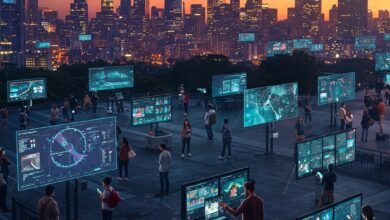Understanding the PG_SLEEP SQL Injection: A Deep Dive into WordPress Form Exploits and How to Secure Your Website

Introduction to SQL Injection
SQL injection is a prevalent form of attack that exploits vulnerabilities within web applications by manipulating SQL queries. It is a technique that enables attackers to interfere with the queries an application makes to its database. By injecting malicious SQL code into input fields, such as login forms or search boxes, attackers can gain unauthorized access to sensitive information, manipulate data, and in some instances, escalate their privileges within the database environment. This type of vulnerability poses significant risks, especially in content management systems like WordPress, which is widely used across the internet.
The mechanics of SQL injection are relatively straightforward. An application fails to properly sanitize user inputs, allowing an attacker to insert unauthorized SQL statements to be executed by the database. This oversight can result in unauthorized data retrieval, alteration, or even deletion. Specific payloads, such as those leveraging the PG_SLEEP function, can be particularly damaging, as they exploit the database’s delay response mechanism to identify vulnerabilities and further infiltrate the system.
The prevalence of SQL injection vulnerabilities in web applications, especially those built on platforms like WordPress, makes it imperative for website administrators and developers to understand the risks associated with these exploits. With countless plugins and themes available for WordPress, each can introduce potential weaknesses if not adequately secured. The consequences of SQL injection attacks can be severe, ranging from data breaches to reputational damage and loss of user trust.
As we delve deeper into this topic, it is crucial to comprehend both the technical underpinnings of SQL injection attacks and the specific implications of the PG_SLEEP vulnerability in WordPress. Understanding these aspects will be pivotal in ensuring robust security measures are implemented to protect website integrity against such pervasive threats.
What is PG_SLEEP?
The PG_SLEEP function is a built-in command in PostgreSQL, primarily utilized to pause the execution of queries for a specified amount of time. When invoked, this function delays the processing of the query, effectively causing the database to “sleep” for a brief period. The time can usually be defined in seconds, allowing the function to simulate longer processing times deliberately. While this function can have legitimate uses in programming, such as introducing wait times to throttle requests or manage resources, it is essential to understand how it can be exploited in the context of SQL injection attacks.
Malicious actors can leverage the PG_SLEEP function to manipulate the timing of database responses, ultimately extracting sensitive information. One common attack strategy involves sending crafted SQL statements to a vulnerable form input. For example, an attacker can construct a SQL payload that contains a conditional statement followed by PG_SLEEP. If the condition evaluates as true, the query will cause the server to pause, thus increasing the response time. This delay can then be measured by the attacker, who can infer valuable information based on the timing. For instance, in a typical blind SQL injection scenario, an attacker might construct a query like: SELECT * FROM users WHERE username='admin' AND (SELECT PG_SLEEP(5) WHERE EXISTS (SELECT * FROM passwords WHERE password='password123')); In this case, a successful injection would result in a five-second delay if the username and password matched, helping the attacker confirm the validity of their guess.
Through such tactics, attackers are not only able to extract data more stealthily but can also disrupt normal operations of a web application. By utilizing the PG_SLEEP function in this manner, they can create unresponsive applications or lead to significant performance bottlenecks, demonstrating the necessity for robust web application security measures against SQL injection vulnerabilities.
Understanding WordPress Form Exploits
WordPress, being one of the most popular content management systems (CMS), is frequently targeted by attackers seeking vulnerabilities in its forms. In particular, web forms within WordPress sites, such as contact forms, search bars, and login forms, often serve as entry points for SQL injection attacks. These types of attacks exploit database queries that the WordPress site relies on for its functionality, potentially allowing unauthorized access to sensitive information.
A significant factor contributing to the vulnerability of WordPress forms is the reliance on third-party plugins and themes. Many of these plugins fail to adhere to secure coding practices, making them susceptible to exploitation. For example, a poorly coded contact form plugin may not properly validate or sanitize user inputs. This lack of stringent validation presents an opportunity for attackers to input malicious SQL code, which can then be executed against the database.
Login forms are another common target for SQL injection. Attackers can manipulate inputs to attempt unauthorized access by injecting SQL commands that alter the intended query. If a hacker can successfully bypass the login authentication, they may gain full control over the website. Similarly, search bars can be targets where an attacker can insert malicious SQL statements, thus extracting sensitive data or modifying it in unintended ways.
Furthermore, even well-intentioned themes that incorporate forms can inadvertently introduce vulnerabilities if not properly maintained. Developers must ensure that every dynamic form created is accompanied by comprehensive security measures. This includes validating inputs, employing prepared statements, and using parameterized queries to safeguard against SQL injection attacks.
Ultimately, understanding the nature of these WordPress form exploits helps administrators take proactive measures in securing their websites against potential threats. Through consistent monitoring and updating of plugins and themes, site owners can significantly mitigate the risks associated with SQL injection vulnerabilities.
Identifying PG_SLEEP SQL Injection Vulnerabilities
Identifying vulnerabilities related to PG_SLEEP SQL injection in a WordPress site is essential for maintaining the overall security and integrity of the website. The first step in this process involves understanding how PG_SLEEP functions within the PostgreSQL database and its associated risks. SQL injections occur when an attacker exploits improperly sanitized user inputs, allowing for arbitrary SQL code execution. Thus, it is crucial to verify that all user inputs are adequately validated and sanitized.
One effective method for identifying potential vulnerabilities is testing forms, search functions, and input fields using a combination of automated tools and manual review. Tools such as SQLMap, BURP Suite, and OWASP ZAP are specifically designed for penetration testing and can help in identifying SQL injection points. By simulating SQL injection attacks, these tools can also reveal whether the application erroneously processes malicious SQL commands, such as those utilizing the PG_SLEEP function.
In addition to using automated tools, conducting regular site audits is vital. This entails reviewing the codebase, plugins, and themes for outdated or insecure components that may expose the website to SQL injection vulnerabilities. It’s important to keep all software up to date and implement security patches promptly to mitigate risks.
Monitoring the site for suspicious activities can also aid in early detection of vulnerabilities. Anomalies in the database queries or unusual patterns in server logs may indicate an attempted SQL injection attack. Utilizing application firewalls can further enhance security measures by filtering out potentially harmful requests before they reach the database layer.
In conclusion, identifying PG_SLEEP SQL injection vulnerabilities requires a multifaceted approach that combines automated tools, thorough audits, and active monitoring. Regular assessments and a proactive stance toward security can significantly reduce the risk of exploitation through SQL injection attacks.
Case Studies of PG_SLEEP Exploits in WordPress
SQL injection attacks, particularly through the PG_SLEEP function, have become an alarming reality for many WordPress sites. Several case studies exist that highlight the vulnerabilities associated with poorly secured forms and databases, showcasing the dire consequences of such exploits. For instance, one well-documented case involved a popular e-commerce site powered by WordPress, where attackers managed to exploit a vulnerable plugin. By crafting a malicious input into a contact form, the attackers utilized the PG_SLEEP function to introduce delays, allowing them to extract sensitive information from the database. This attack resulted in the exposure of customer data, leading to significant financial losses and loss of consumer trust.
Another notable incident occurred with a nonprofit organization’s WordPress website that housed sensitive data on volunteers and donors. The site was targeted using a PG_SLEEP-based SQL injection, where the attackers employed timing attacks to amend queries and access the backend database. The exploit led to the theft of personally identifiable information, including names, email addresses, and financial details. The aftermath was catastrophic, as the organization faced criminal investigations and hefty fines due to inadequate data protection measures, alongside the reputational damage that made it difficult to regain the trust of their supporters.
In a third example, a heavily trafficked blog experienced a PG_SLEEP SQL injection that bypassed its security layers through the registration process. The cybercriminals leveraged this vulnerability to access the database and siphon off user credentials. Following the attack, the site administrators faced not only the technical challenges of recovery but also the daunting task of managing public relations post-breach. Users were informed of potential identity theft, inciting widespread panic and leading to a substantial drop in website traffic and engagement.
These instances underscore the pressing need for WordPress site owners to regularly assess their security protocols. With the rising sophistication of these attacks, implementing robust measures is no longer optional but a critical necessity to protect both sensitive data and the integrity of their platforms.
Best Practices for Securing WordPress from SQL Injection
Securing a WordPress site from SQL injection attacks is essential for safeguarding sensitive data and ensuring the overall integrity of the website. By implementing a series of best practices, website administrators can significantly reduce the risk of exploitation.
One fundamental practice is the use of prepared statements. Prepared statements enhance security by separating SQL code from user inputs. This prevents attackers from injecting harmful SQL commands, effectively nullifying the threat posed by SQL injection vulnerabilities. Utilizing database abstraction layers or frameworks that support prepared statements can aid in this endeavor.
Another crucial aspect is maintaining updated plugins and themes. Security vulnerabilities are often discovered in outdated software, making outdated plugins and themes prime targets for SQL injection attacks. It is advisable for administrators to regularly check for updates and apply them promptly. Active maintenance not only fortifies the site against exploitation but also improves overall performance and functionality.
Employing a web application firewall (WAF) serves as a proactive defense mechanism. A WAF can filter, monitor, and analyze incoming traffic to detect and block SQL injection attempts and other malicious activities. By providing an additional layer of security, WAFs help in identifying suspicious behaviors prior to them reaching the WordPress application.
Conducting regular security audits is also recommended. These audits should include comprehensive assessments of code, configurations, and user role permissions. Utilizing automated tools alongside manual inspections can help identify potential vulnerabilities before they can be exploited. This continuous loop of evaluation and enhancement contributes to a more resilient security posture.
In conclusion, adopting best practices such as utilizing prepared statements, keeping software updated, employing firewalls, and conducting security audits can significantly mitigate the risk of SQL injection attacks on WordPress sites. By prioritizing these measures, administrators can contribute to a safer online environment for both themselves and their users.
Using Security Plugins for Protection
WordPress, being one of the most widely used content management systems, is unfortunately a frequent target for SQL injection attacks. One of the most effective ways to ward off such vulnerabilities is through the utilization of security plugins specifically designed for WordPress. These plugins not only help in preventing SQL injections but also enhance the overall security posture of your website by providing a suite of protective features.
Among popular security plugins, Wordfence stands out due to its comprehensive firewall and malware scan functionalities. It actively monitors live traffic and is capable of blocking malicious requests. However, the extensive features may come with a performance overhead, requiring proper configuration for optimal results. Another noteworthy option is Sucuri Security, which offers a robust set of features including security activity auditing, file integrity monitoring, and remote malware scanning. Sucuri excels in its cloud-based firewall that acts as a shield against common threats, though some users may find the user interface less intuitive compared to competitors.
For those seeking a lightweight solution, iThemes Security could be an ideal choice. It focuses on preventing unauthorized access and can automatically apply several recommended security settings. However, its effectiveness decreases without proper tuning according to specific needs. When selecting a security plugin, consider your technical expertise, the size of your website, and your specific security requirements. Regardless of which plugin you choose, it’s crucial to configure it correctly to maximize its protective features and regularly update it to counter new vulnerabilities.
Installation of these plugins is generally straightforward, often requiring only a few clicks in the WordPress admin dashboard. After installation, running initial scans and configuring necessary settings will greatly enhance your defenses against SQL injection and other potential exploits.
Responding to a SQL Injection Attack
In the event of a detected PG_SLEEP SQL injection attack, it is crucial to undertake a structured and comprehensive response to mitigate damage and restore the security of your WordPress site. The first step in this incident response process is to promptly assess the extent of the damage incurred. This entails reviewing the logs and identifying affected areas of your database where unauthorized queries might have been executed. Understanding the nature of the attack will help in gauging the potential data compromise and in prioritizing the response actions.
Once the scope of the attack has been assessed, it is vital to initiate a cleanup process. The cleanup should involve removing any malicious code or unauthorized access points created during the attack. Additionally, you should ensure that all passwords and access credentials are changed immediately to prevent any further exploitation of your system. After securing your credentials, restoring any corrupted data from reliable backups is imperative. Validating the integrity of your backups will ensure that only clean data is restored, thus minimizing the risk of reinfection.
Prevention is as critical as response; therefore, implementing robust security measures to avert future SQL injection attacks is essential. This may include regular updates to your WordPress core, plugins, and themes to minimize vulnerabilities. Employing web application firewalls and security plugins specifically designed to filter out SQL injection attempts can provide an extra layer of defense. Furthermore, an equally important aspect is the establishment of an incident response plan. This plan should outline specific roles, responsibilities, and actions to take in the event of a security breach, ensuring that your team is prepared to act swiftly and effectively.
Conclusion and Future Trends in Web Security
In this blog post, we have explored the critical aspects of PG_SLEEP SQL injection, particularly within the context of WordPress form exploits. We have seen how such vulnerabilities can be exploited by attackers to compromise the integrity of a website, jeopardizing sensitive data and impacting overall site performance. The discussion highlighted the necessity for robust security measures, including coding best practices and regular updates to both plugins and WordPress itself. By understanding how SQL injection attacks work, such as those utilizing the PG_SLEEP function, webmasters can better prepare their sites against these types of threats.
The landscape of web security is continuously evolving, with attackers employing increasingly sophisticated methods to penetrate defenses. As technologies advance, so too do the techniques utilized by malicious actors. This reality emphasizes the critical need for ongoing education and adaptation in security practices. Webmasters must remain vigilant and proactive in identifying potential vulnerabilities within their systems. This may involve regular security audits, implementation of web application firewalls, and utilizing plugins designed to fortify against SQL injections and other vulnerabilities.
Furthermore, fostering a culture of security awareness among all stakeholders, including developers and end-users, can significantly enhance the overall security posture of a website. As new vulnerabilities are discovered, being informed about the latest threats and security solutions is essential for maintaining a resilient web presence. By continually updating their knowledge, webmasters can adapt their security strategies, ensuring their websites remain secure against emerging threats.
Ultimately, safeguarding a website from SQL injection attacks requires both knowledge and action. By investing time in learning about these vulnerabilities and implementing effective measures, website owners can protect their assets and provide a safe experience for their users.






















Thank you for your articles. They are very helpful to me. May I ask you a question?